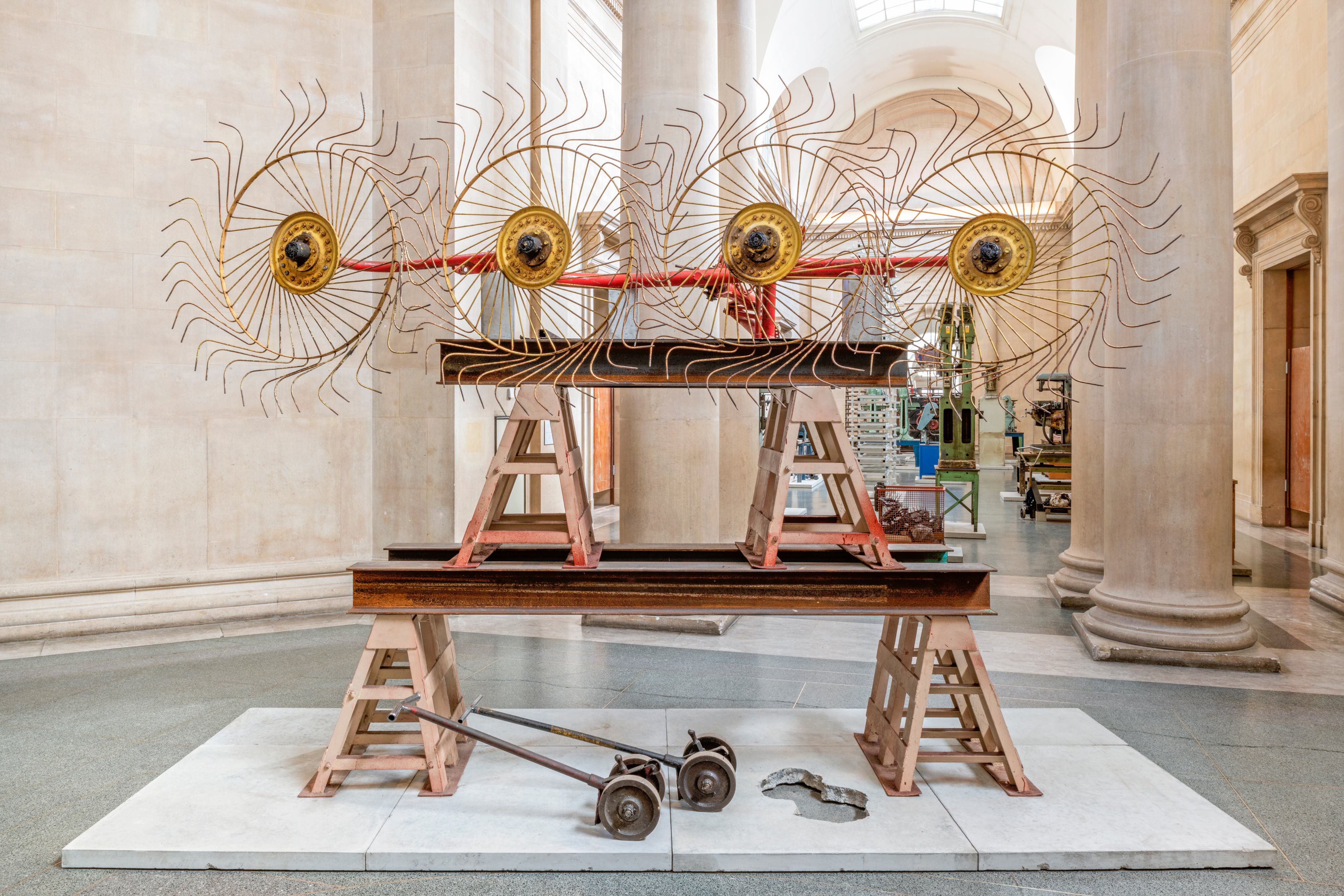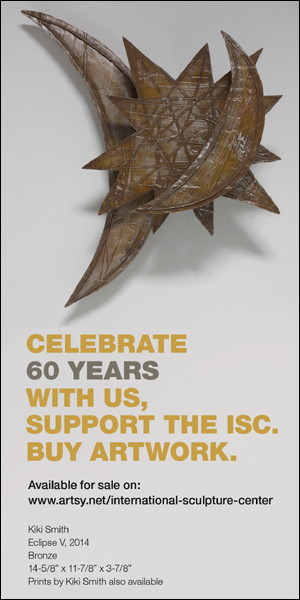London
The Asset Strippers―Mike Nelson’s epic new installation for this year’s Tate Britain Commission―has to rank as one of the most unexpected and intrusive displays ever shown within this hallowed institution. Redundant machines and equipment sprawl across the entire breadth of the Duveen Galleries, creating a graveyard of Britain’s industrial past that transforms the museum’s core into an asset strippers’ warehouse. The title, which bears a direct relationship to Nelson’s working process, highlights the fact that he sourced his materials via the online auctions of asset strippers and liquidators, making use of the same digital technology that has superseded the defunct objects.
The installation, which remains on view through October 6, 2019, boldly underscores the decline of the U.K.’s manufacturing industry, infrastructure, and welfare state. Visitors enter through swing doors with porthole windows that came from an old NHS hospital in London; the graffitied steel sheeting once cordoned off a condemned housing estate; and the wooden partitions were seized from a former army barracks. The enormous knitting machines collected from textile factories act as potent reminders of Nelson’s childhood in the East Midlands. These echoes of the recent past are all expertly assembled into a lament for Britain’s social and political history. With such accelerating change, one has to wonder how long before the tools and machines that we now take for granted succumb to the same museological fate.
The development of sculpture through the 20th century was made possible, in part, by the development of increasingly sophisticated machinery, and The Asset Strippers expounds that interdependent relationship. Funnels, drills, mills, grinders, presses, lathes, clamps, welders, cutters, and mixers―all endowed with sculptural characteristics of their own―are mounted on plinths fashioned from slabs, trestles, and girders; felled telegraph poles, ladders, abandoned iron trolleys, wooden planks, and scaffolding forge a hazardous path through the tableaux. In the center, hay rakes―reminiscent of beaming sunflowers or whirling Catherine wheels―create an astonishing focal point. These noble relics bear poignant traces of the people who once used them. They are strangely beautiful, signifying a time when individuals labored in order to produce tangible results useful to society. Now, of course, skilled labor has become as redundant as the melancholy objects occupying this 300-foot-long space.
On closer inspection, the finer points come into view: a twist of delicate threads, colored wool around a bobbin, frayed springs and wires, dried oil, rusty mechanisms, fingerprints, and tarnish. These machines―many of which still bear their lot numbers―remain shrouded in mystery, their details only hinting at a life once lived. The Asset Strippers takes pleasure in revealing not only the material qualities of each piece, but also the wider cultural and social context. Nelson crafts an immersive labyrinth, taking viewers on a journey through an industrial wasteland of majestic proportions. Although it is possible to identify the original purpose of each machine, the impact of the installation relies on how the independent pieces have been merged or grouped into fantastical hybrids. It feels like walking through a dystopian future—societal structure has broken down, and humanity must forge its survival through the discarded remains of a bygone age while sinking into inevitable barbarity.
It has to be remembered that Britain enjoyed immense industrial prowess throughout the 19th and early 20th centuries, and The Asset Strippers is informed by the Duveen’s origins as the first purpose-built sculpture galleries in England in 1937. As the narrative unfurls―culminating in four plaques to commemorate the coronation of George VI―the installation traverses eight decades of extraordinary national change. Now, with ideologically driven austerity measures firmly in place, the nation’s assets continue to diminish. Nelson has laid this position bare, which poses an uncomfortable two-part question: What have we become, and where are we going? In his mind, the answer is unequivocal: we are hurtling toward a “new Victorian era of wealthy patronage in the wake of state decline, spawning vanity and inequality.”




